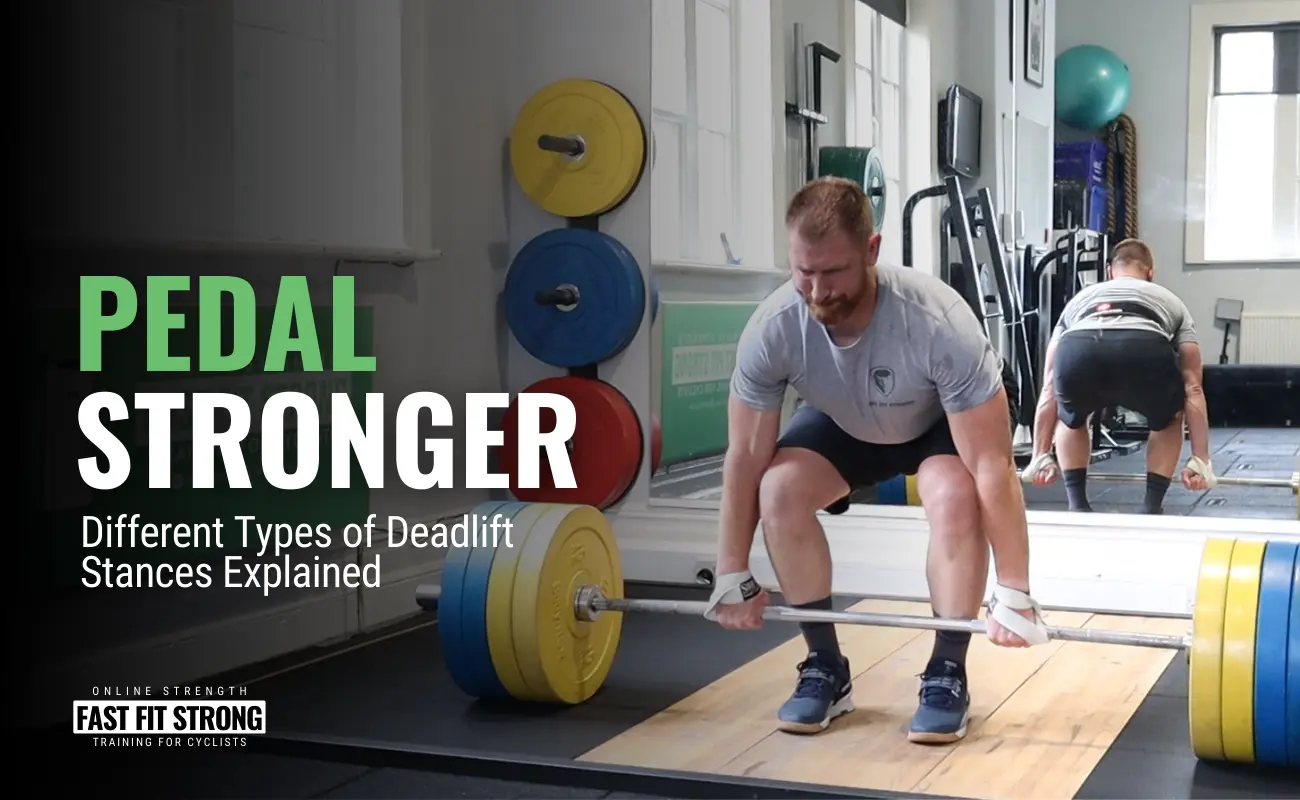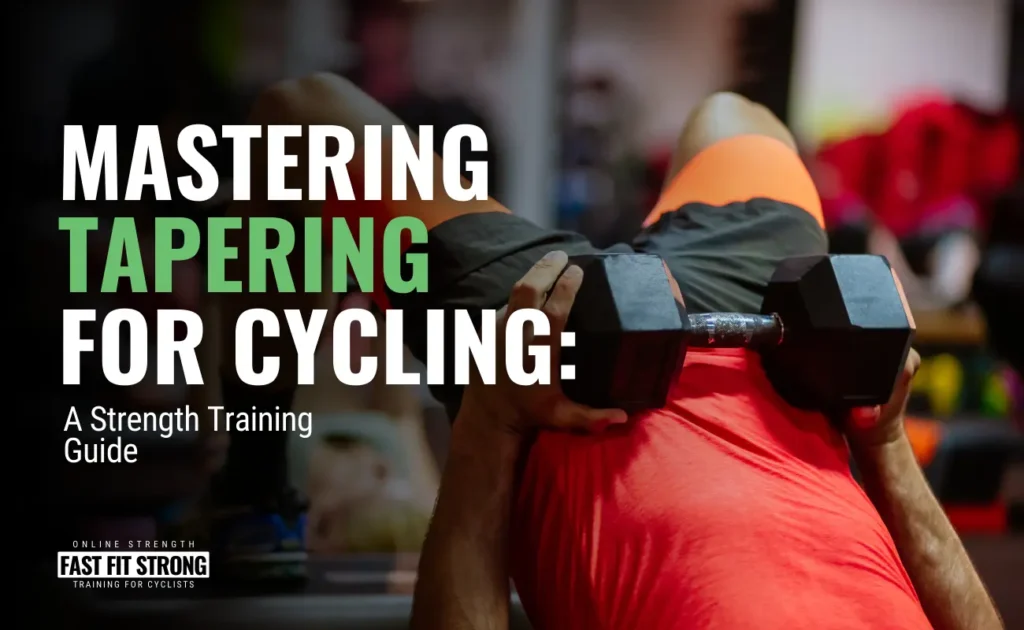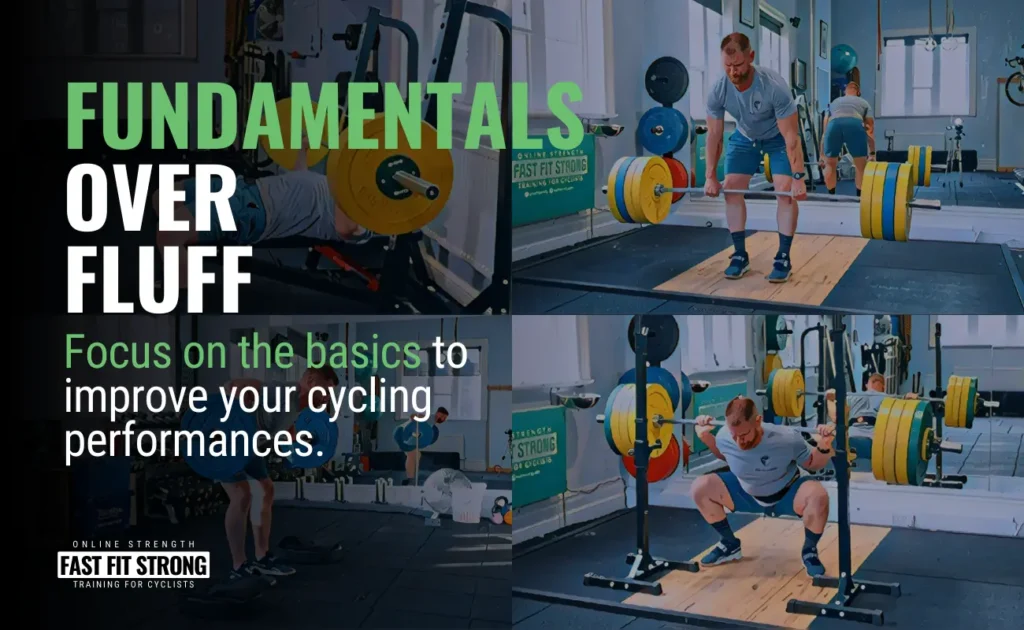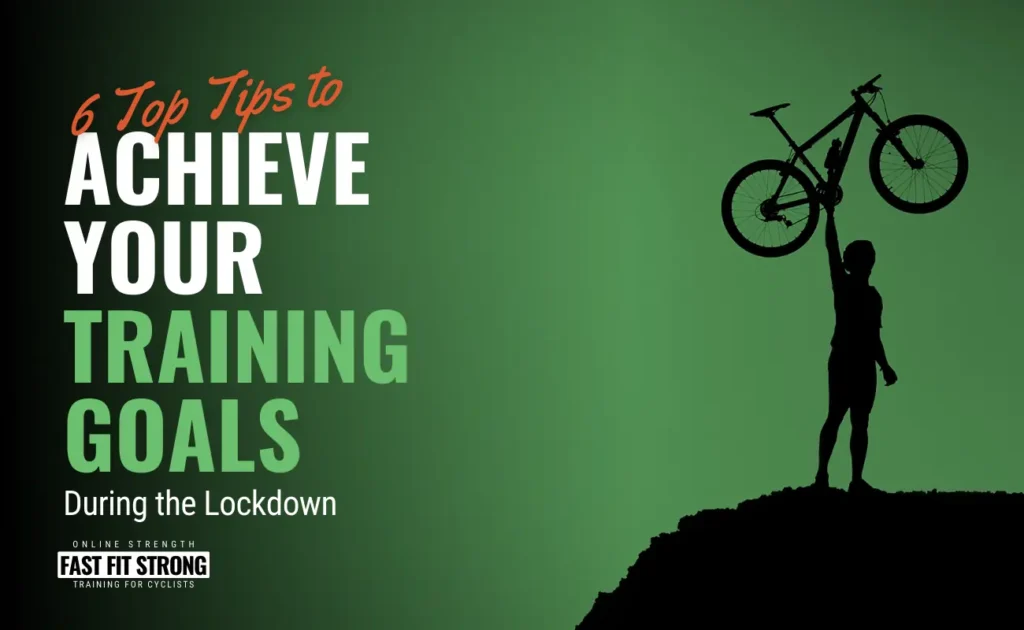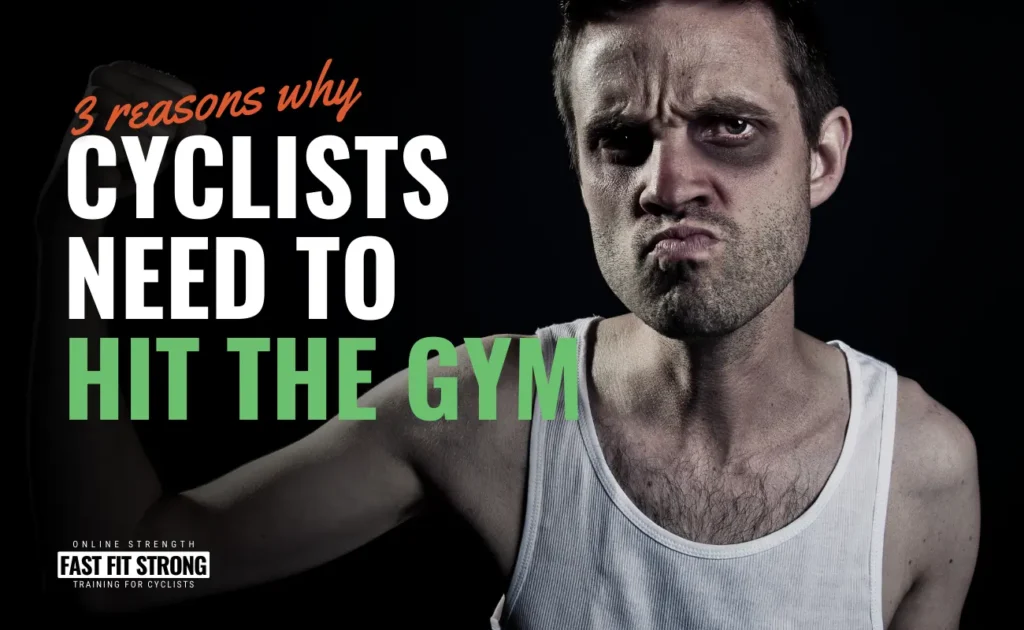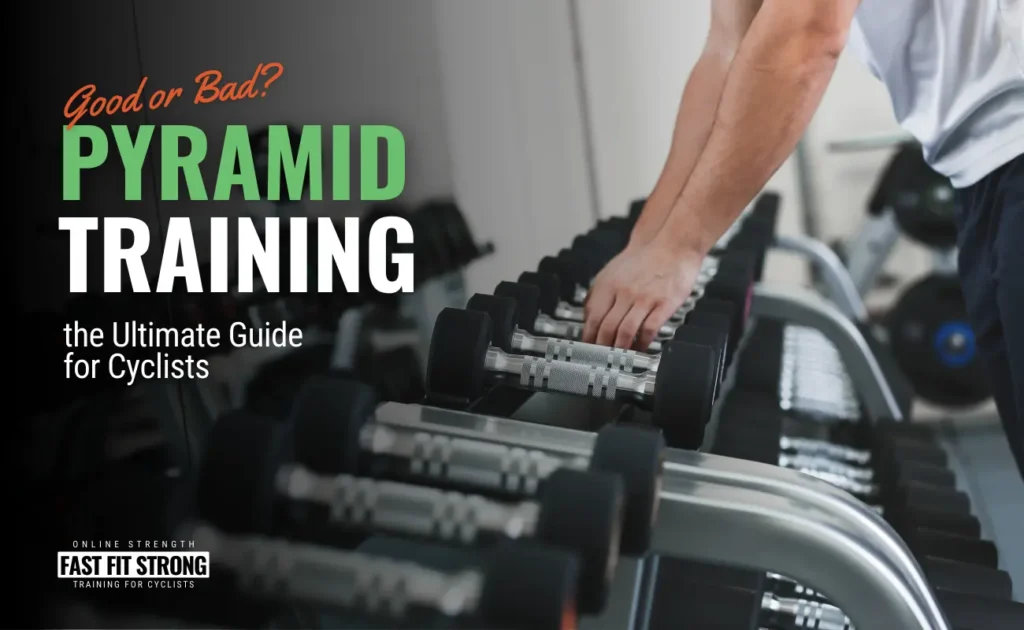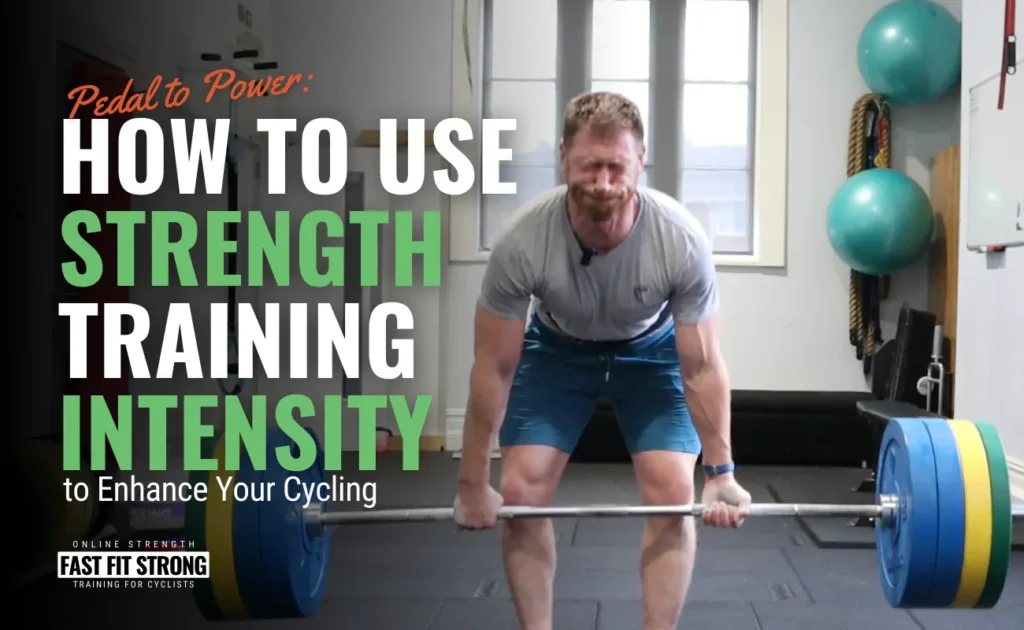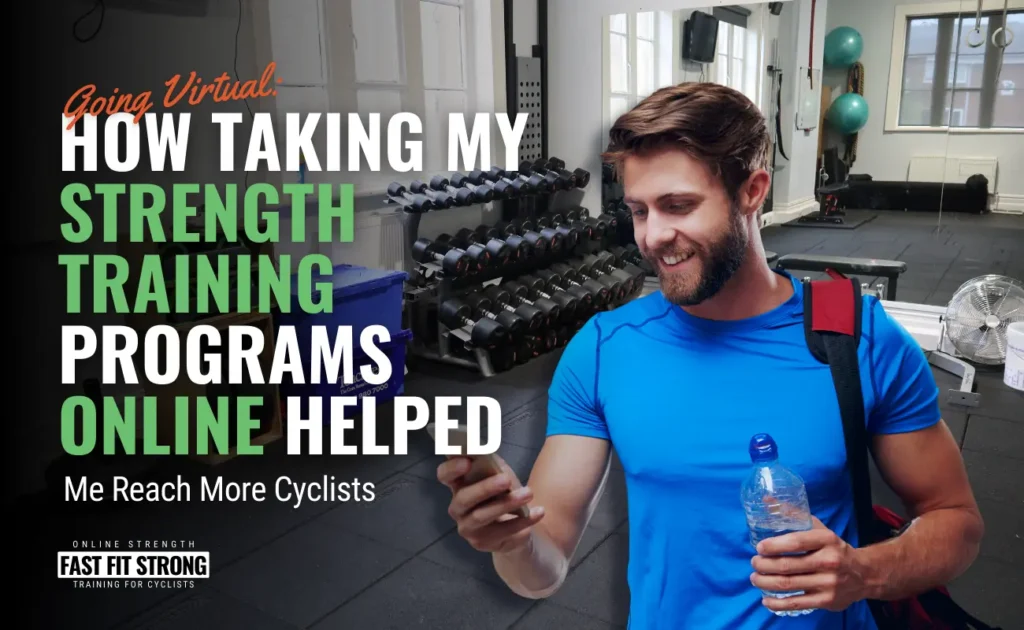As cyclists, we understand the importance of strength training to enhance our performance on the bike and, after squats, the most important movement we can do to help boost our injury resiliency is the hip hinge.
For most, this movement is normally shown in variations of the deadlift, a compound exercise that can significantly benefit the vast majority of cyclists. But here’s the catch: there isn’t a one-size-fits-all approach to deadlifting. There are different types of deadlift and different ways of performing each one.
Different stances can have varying advantages and disadvantages, depending on your body shape, experience and other factors. Let’s explore three main deadlift stances and how they can impact your cycling journey:
1. Sumo Stance: Maximising Hip Engagement
How to Perform the Sumo Deadlift
- Take a wider-than-shoulder stance in front of a bar, with your toes turned out.
- Push your hips back, creating tension in the backs of your legs, and take a narrow, overhand grip.
- Drive through your midfoot to lift the bar off the floor as your hips and shoulders raise at the same speed.
- As you round your knees drive your hips forward to stand up and complete the lift.
- Lower the bar back to the floor in control.
- Repeat for the prescribed number of repetitions.
Advantages of the Sumo Deadlift
Reduced Lower Back Strain – This is the major advantage of Sumo Deadlifts in my opinion. Because of the extremely wide stance, it is much easier to maintain a near vertical torso which minimises shear forces across the spine, massively reducing stress on your lower back. Cyclists who have chronic lower back problems will find Sumo Deadlifts beneficial as they start to get back into gym-based training.
Enhanced Hip Mobility – The sumo stance, with its wide leg placement, requires far greater hip mobility, however, this is specifically limited to abduction and external rotation mobility (see below). On the bike, this can translate to smoother, more efficient pedal strokes and reduced knee pain.
Disadvantages of the Sumo Deadlift
Limited Hip Hinging – One of the biggest benefits of doing deadlift movements is learning how to properly hip hinge. That is flexing and extending at your hips without any movement through your spine or legs. While the sumo stance can be excellent for hip engagement, its reduced range of movement and more upright posture dramatically limit hip flexion. This is a drawback because developing this skill, and strengthening this pattern is vital to prevent the types of chronic back pain common in cyclists.
Knee Rotation – I mentioned above that one of the benefits of this stance is better hip mobility. But if you lack it in the beginning (which most cyclists do), it will be difficult to get into the sumo stance in the first place. Attempting this exercise like this creates a twisting force through your knees which is not good!!
2. Modified Sumo Stance: Balancing Power and Stability
How to Perform the Modified Sumo Deadlift
- Begin by taking a stance that is slightly wider than hip-width in front of the barbell.
- Initiate the movement by pushing your hips back, creating tension in the muscles at the back of your legs.
- Grasp the barbell with an overhand grip, positioning your hands just inside your knees.
- Focus on driving through the midfoot to lift the barbell off the floor. Keep your hips and shoulders rising simultaneously.
- As you round your knees, engage your hip muscles to drive them forward, standing up fully to complete the lift.
- Maintain control as you lower the barbell back to the floor, ensuring a smooth and controlled descent.
- Repeat this exercise for the prescribed number of repetitions.
Advantages of the Modified Sumo Deadlift
Versatility – This stance can be a versatile addition to your strength training routine. It offers benefits for both hip and lower back development, making it adaptable to your cycling goals.
Core Stability – The modified sumo stance strikes a balance between hip engagement and core stability. For cyclists, this means maintaining a strong core while still promoting hip activation. It can be an excellent choice for riders who want to strengthen their core muscles without sacrificing hip mobility.
Disadvantages of the Modified Sumo Deadlift
Not Specialised – While versatile, the modified sumo stance still doesn’t provide the same level of specialisation for hip or lower back development as the other stances. Depending on your specific needs, you might prefer a more targeted approach.
Finding the Right Balance – Achieving the perfect balance between hip engagement and core stability can be challenging. It may require some experimentation to discover the stance width that suits you best.
3. Traditional (Narrow) Stance: Strengthening the Lower Back
How to Perform the Traditional Deadlift
- Take a hip-width stance in front of a bar.
- Push your hips back, creating tension in the backs of your legs, and take an overhand grip.
- Drive through your midfoot to lift the bar off the floor as your hips and shoulders raise at the same speed.
- As you round your knees drive your hips forward to stand up and complete the lift.
- Lower the bar back to the floor in control.
Advantages of the Traditional Deadlift
Good Movement Patterns and Lower Back Strength – The traditional (narrow stance) deadlift places a significant emphasis on the lower back and hamstrings by hinging at your hips. Whilst this may sound scary, it’s actually essential if you want to minimise injury risk on the bike…it’s good to have a lower back that is strong and stable, especially during long rides.
Cycling Specificity – Unlike the wider stances, this traditional, narrow stance closely mimics the leg position and hip angles of a cyclist in the saddle. The muscle engagement patterns can be more directly transferable to cycling.
Disadvantages of the Traditional Deadlift
Limited Hip Engagement – While great for lower back strength, the narrow stance may not provide the same level of hip engagement as the wider stances. Cyclists seeking to improve hip abduction and/or external rotation may need to supplement with other exercises.
Increased Lower Back Stress – With the narrow stance, there’s a potential for increased stress on the lower back. Proper form and progressive training are crucial to mitigate this risk.
Conclusion
In conclusion, the choice of deadlift stance depends on your individual goals, strengths, and weaknesses as a cyclist. Sumo deadlifts excel in hip mobility and lower back relief but might not fully align with cycling’s specific muscle engagement. Modified sumo stances offer versatility, balancing hip engagement and core stability, while traditional narrow stances target lower back strength, closely mirroring cycling posture.
In my opinion, as a professional strength coach since 2003, is that the traditional deadlift should be the preferred option for the vast majority of riders. However, I strongly recommend that you learn to properly hip hinge by utilising exercises like Romanian Deadlifts and progressively increasing range of movement with Rack Pulls and Floating Deadlifts before you eventually work from the floor.
Whether you’re looking to enhance hip mobility, strengthen your core, or build lower back resilience, there’s a deadlift stance that can benefit your cycling performance. So, choose wisely, pedal powerfully, and elevate your cycling game through the art of deadlifting!
If you’d like to up your game off the bike to boost your performance on it, then subscribe to my Cyclist’s Edge program now.
